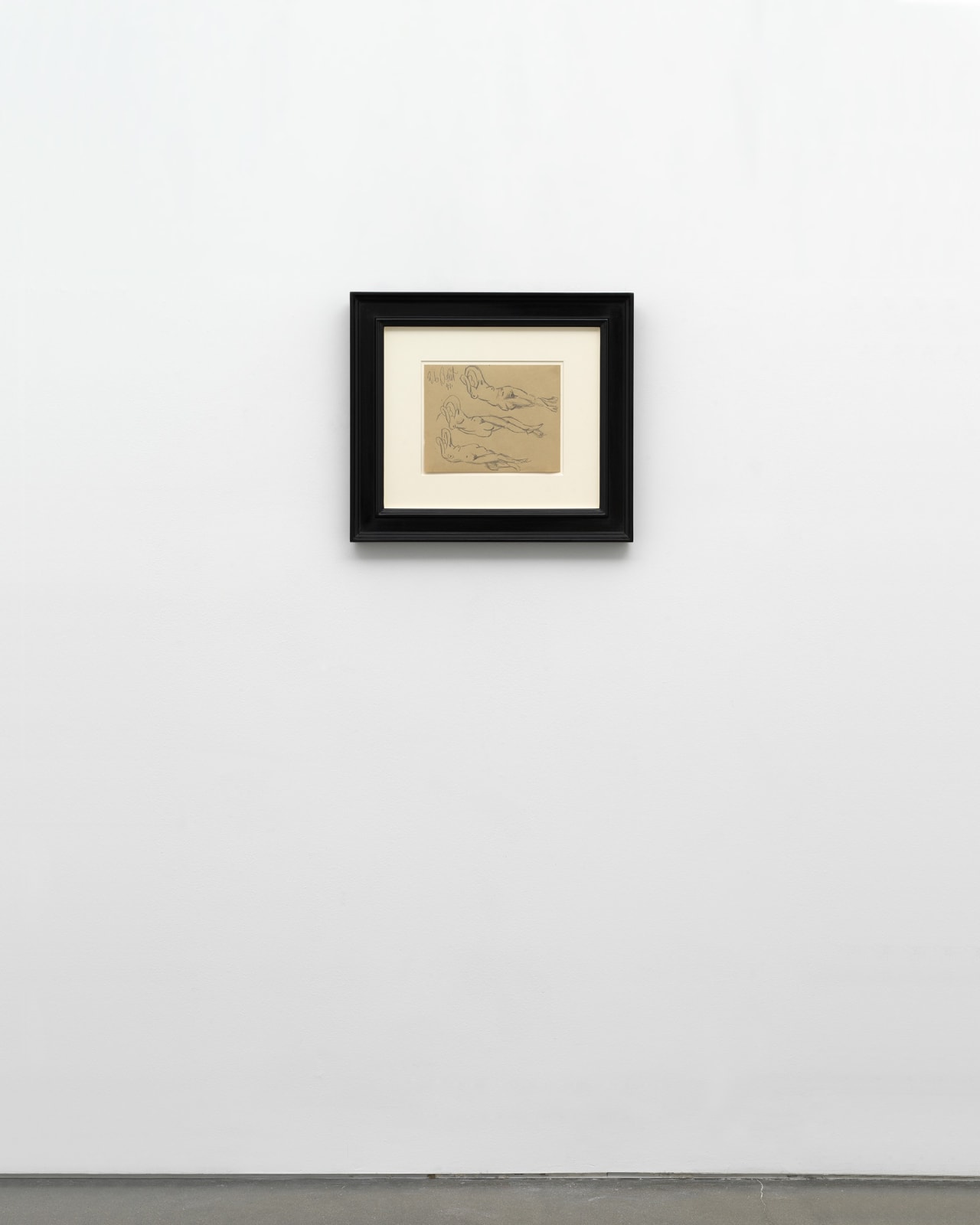-
Artworks
Pablo Picasso
L'aubade: Études de nus allongés (Dora Maar), 1941Pencil on paper8 1/4 x 10 5/8 in (21.1 x 27 cm)© 2025 Estate of Pablo Picasso / Artists Rights Society (ARS), New York. Courtesy of Zeit Contemporary Art, New YorkFurther images
'L’aubade: Études de nus allongés (Dora Maar)' is a remarkable example from Picasso’s period dating 1936-1945, which was revelatory of his personal state of anguish and turmoil stemming from the...'L’aubade: Études de nus allongés (Dora Maar)' is a remarkable example from Picasso’s period dating 1936-1945, which was revelatory of his personal state of anguish and turmoil stemming from the Spanish Civil War and World War II as well as his ongoing formal explorations. Picasso held a unique position during the Spanish Civil War as a Spaniard living in France. He and his companion and lover at the time, Dora Maar, remained in Paris during the Nazi occupation, a time when fear and claustrophobia gripped the city. Picasso worked feverishly during this period, focusing primarily on portraits, nudes, and still lifes. As these are classic genres in Western art, he purposely commented on the tradition and weight of art history while simultaneously subverting it in line with his own personal perspective on war.As in this study, a motif common in the artist’s oeuvre at this time that directly speaks to the art historical canon is that of the recumbent female nude. Picasso once stated “women are machines for suffering,” and in this case the female body can be read as a vehicle for expressing his mindset during this turbulent time. In this drawing, the nude above is fairly realistic, while, as one’s eyes move down, the subsequent two become more and more twisted, as if Picasso put his own pain in the body of the model. While distortion was not new to Picasso’s work, from 1940 onward Picasso went beyond Cubism in his interest in depicting the entire female body at once; this study is thus an early example of the ways he accomplished this feat through interlocking planes. Maar was also the subject of Picassos’ famed 1937 'Weeping Woman,' but she stated it was not in fact a portrait of her, but rather a metaphor for the tragedy of the Spanish people. The very same can be said for this study in light of World War II.
While works such as 'Guernica' (1937) depict images of war in a direct way, other works such as this drawing approach it in a more metaphorical manner; Picasso stated: “I have not painted the war because I am not the kind of painter who goes out like a photographer for something to depict. But I have no doubt that the war is in these paintings I have done.” Drawing was central to Picasso’s artistic practice, and other studies from this series titled 'L’aubade' are held in lauded institutions such as the Centre Pompidou and the Musée Picasso in Paris. It is most significant in revealing Picasso’s artistic process and emotional fervor.
Provenance
Estate of the artist
Marina Picasso Collection (the artist’s granddaughter; acquired from the above)
Private collection, New YorkLiterature
Christian Zervos. Pablo Picasso, Œuvres de 1940 et 1941. Paris, 1960, vol. 11, no. 250, illustrated on p. 102.
The Picasso Project. Picasso's Paintings, Watercolors, Drawings and Sculpture. Nazi Occupation, 1940-1944. San Francisco, 1999, no. 41-182, illustrated on p. 67.
Christian Zervos. Pablo Picasso, Works from 1940 to 1941. Paris, 2013, vol. 11, no. 250, illustrated on p. 102.1of 6






